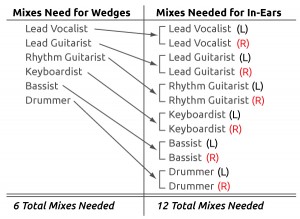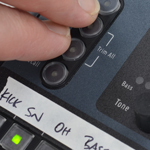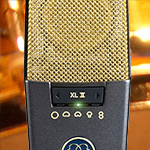What’s So Different With In-Ears?
 We’ve talked before about some guidelines for making a successful transition from wedges to in-ears (see it here), but let’s dive back in and start getting a little more specific on what some of the issues are and how you can avoid them.
We’ve talked before about some guidelines for making a successful transition from wedges to in-ears (see it here), but let’s dive back in and start getting a little more specific on what some of the issues are and how you can avoid them.
In our experience, the biggest reason people have a less-than-ideal out-of-the-box experience with in-ear monitors is they expect it to be basically the same as working with a floor wedge. Remember, they’re different and the adjustment may take some time.
So let’s look at what’s really so different.
#1 Open v. Closed
The first difference is that a wedge is a big, open-air speaker that leaves the musician’s ears open to all the other sound sources around him or her, while in-ear monitors are a combination of ear plugs and earphones. By design, in-ear monitors block out a lot of the other sound sources and then put the musician’s monitor mix right in his or her ears.
That’s a great thing because it helps musicians hear only what they need to hear, without lots of interference from competing sound sources. Like the guitarist’s wedge. Or the drum kit. Or the bass cabinet. Etc., etc., etc. It’s what brings an end to the “volume wars” where each musician asks for something to be turned up because he or she can’t hear it over all the other things they’re hearing ambiently. (It’s also great because it dramatically lowers the amount of sound on the stage, spilling into the audience area.)
The downside of being closed, though, is that all of those other sound sources that a musician is accustomed to hearing are (mostly) gone. What’s left? The monitor mix. Which means the monitor mix HAS to be right. Because it’s all the musician can really hear.
The other downside of being closed is that some musicians feel isolated or cut off or will say that things sound or feel unnatural. That’s because sticking tiny speakers in your ears and blocking out all other sounds IS unnatural. Literally. It’s not how we as humans naturally process sound. There are some easy ways to address that (Stay tuned for a future post!), but it’s a legitimate issue and a big change from a wedge.
#2 One v. Two
Another big difference is that most wedge-using musicians rely on just a single wedge (or they use multiple wedges for coverage across a stage), while earbuds come in pairs. (Side note: if you’re ever tempted to take one earbud out, resist the urge! It can be bad for your hearing, which we’ll talk more about in a future post over in our Audio Lab section.)
Why does that matter so much? Because it dramatically increases the workload for engineers (unless you go with Aviom Personal Mixers!) and the number of customized mixes required (which Aviom Personal Mixers make easy!).
In a world of wedges, customizing mixes for each musician means one mix per person, and you can sometimes even get away with people sharing the same mix because of all the ambient sounds blending in.
With in-ears, everyone’s mix needs to be customized (because that’s all the musician hears), and you need to customize two mixes for every musician: one for the left ear and one for the right. Yes, you literally can send a mono mix to a musician using in-ears, but the quality is vastly inferior, and musicians will have a harder time hearing what they need to and will be more likely to complain of ear fatigue and isolation. More on that in a future post as well.
#3 Intangibles
Some people just don’t like the idea of sticking things in their ears. Some people love the feeling of a loud wedge making their pants vibrate and like to hear the whole stage rather than the more pristine world of in-ears. All those preferences are legitimate, and in-ears are simply different.
But there’s no reason that in-ears can’t sound and feel great, if you start by recognizing what’s different from wedges and work through those issues, collaboratively, musicians and engineers together.
And, of course, Aviom Personal Mixers will really help too.




